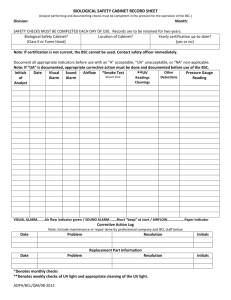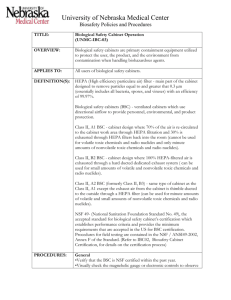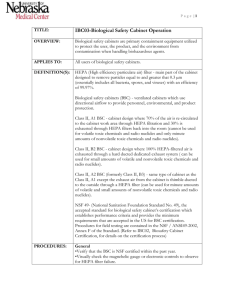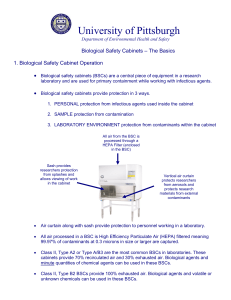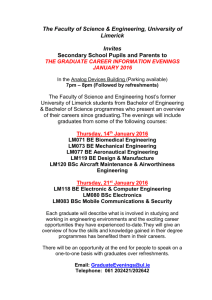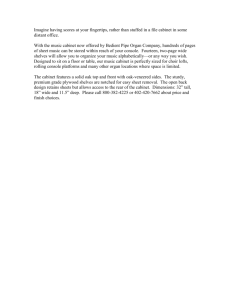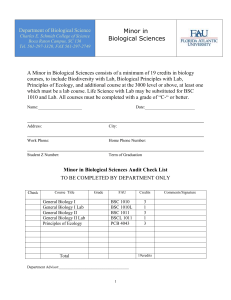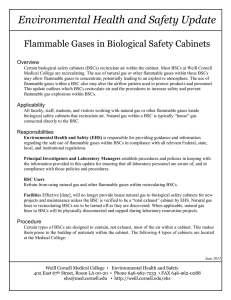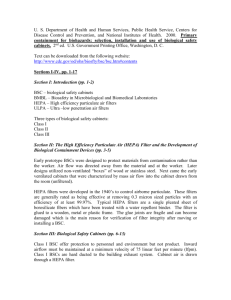Biological safety cabinets
advertisement
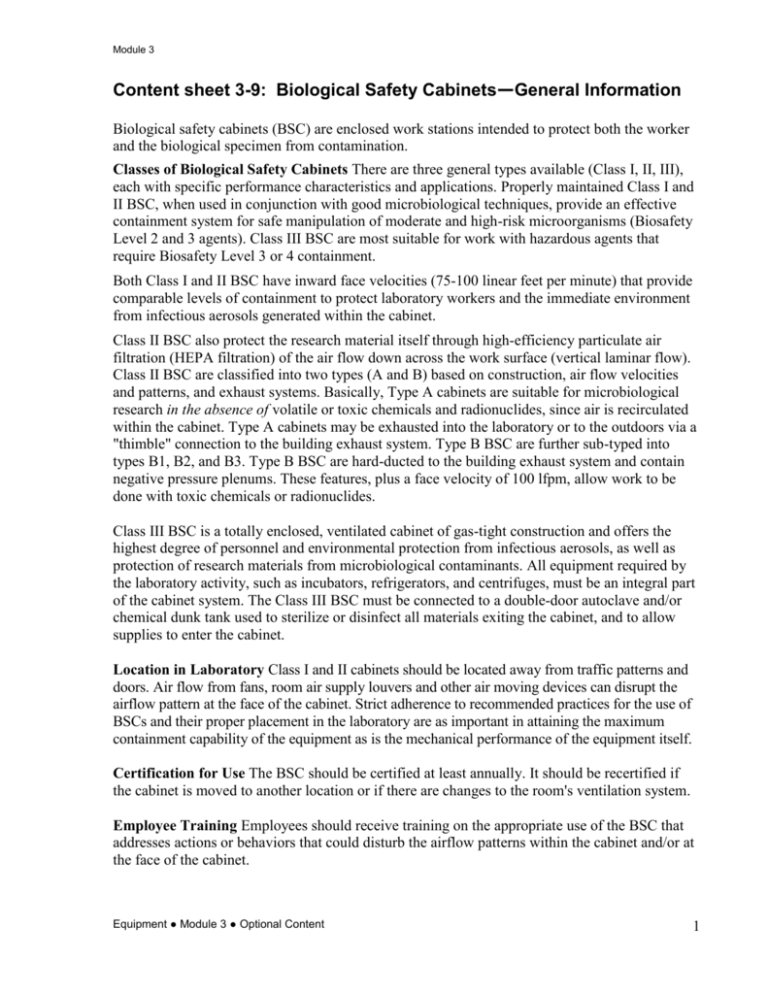
Module 3 Content sheet 3-9: Biological Safety Cabinets—General Information Biological safety cabinets (BSC) are enclosed work stations intended to protect both the worker and the biological specimen from contamination. Classes of Biological Safety Cabinets There are three general types available (Class I, II, III), each with specific performance characteristics and applications. Properly maintained Class I and II BSC, when used in conjunction with good microbiological techniques, provide an effective containment system for safe manipulation of moderate and high-risk microorganisms (Biosafety Level 2 and 3 agents). Class III BSC are most suitable for work with hazardous agents that require Biosafety Level 3 or 4 containment. Both Class I and II BSC have inward face velocities (75-100 linear feet per minute) that provide comparable levels of containment to protect laboratory workers and the immediate environment from infectious aerosols generated within the cabinet. Class II BSC also protect the research material itself through high-efficiency particulate air filtration (HEPA filtration) of the air flow down across the work surface (vertical laminar flow). Class II BSC are classified into two types (A and B) based on construction, air flow velocities and patterns, and exhaust systems. Basically, Type A cabinets are suitable for microbiological research in the absence of volatile or toxic chemicals and radionuclides, since air is recirculated within the cabinet. Type A cabinets may be exhausted into the laboratory or to the outdoors via a "thimble" connection to the building exhaust system. Type B BSC are further sub-typed into types B1, B2, and B3. Type B BSC are hard-ducted to the building exhaust system and contain negative pressure plenums. These features, plus a face velocity of 100 lfpm, allow work to be done with toxic chemicals or radionuclides. Class III BSC is a totally enclosed, ventilated cabinet of gas-tight construction and offers the highest degree of personnel and environmental protection from infectious aerosols, as well as protection of research materials from microbiological contaminants. All equipment required by the laboratory activity, such as incubators, refrigerators, and centrifuges, must be an integral part of the cabinet system. The Class III BSC must be connected to a double-door autoclave and/or chemical dunk tank used to sterilize or disinfect all materials exiting the cabinet, and to allow supplies to enter the cabinet. Location in Laboratory Class I and II cabinets should be located away from traffic patterns and doors. Air flow from fans, room air supply louvers and other air moving devices can disrupt the airflow pattern at the face of the cabinet. Strict adherence to recommended practices for the use of BSCs and their proper placement in the laboratory are as important in attaining the maximum containment capability of the equipment as is the mechanical performance of the equipment itself. Certification for Use The BSC should be certified at least annually. It should be recertified if the cabinet is moved to another location or if there are changes to the room's ventilation system. Employee Training Employees should receive training on the appropriate use of the BSC that addresses actions or behaviors that could disturb the airflow patterns within the cabinet and/or at the face of the cabinet. Equipment ● Module 3 ● Optional Content 1 Module 3 Additional resources on the CD-ROM Primary Containment for Biohazards: Selection, Installation and Use of Biological Safety Cabinets (54-page pdf-format document) Requirements for Purchasing a Biological Safety Cabinet Class II (2-page Word document) see Module 4 Purchasing and Inventory Equipment ● Module 3 ● Optional Content 2
